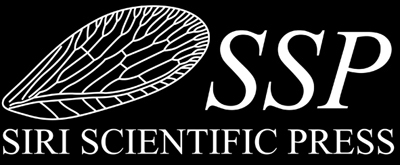Available to pre-order: Why Nature Conservation Isn't Working: Understanding Wildlife in the Modern World
Posted by David Penney on
We are very pleased to announce that our forthcoming title: Why Nature Conservation Isn't Working: Understanding Wildlife in the Modern World by Adrian Spalding is now available to pre-order. Click the cover image below for more information or to order your copy now.
Siri Scientific Press (2021, 31st July) 978-1-8381528-4-0, RRP £14.99
160 pp, 240 x 165 mm, soft cover
TO BE RELEASED 31 JULY 2021, but pre-ordered advance copies will be shipped before this date.
Synopsis: Species are central to nature conservation, but we see wildlife as adjuncts to people without connection with their authentic habitats. With this limited view, we cannot save wildlife from extinction. Concentration on iconic species achieves brilliant publicity but looks after the icing whilst the cake crumbles beneath.
Reviews
in preparation
From the back cover
(the next year) “… must be the year to reconcile humanity with nature” – António Guterres, United Nations Secretary General.
This book attempts to put species into the context of our perception. Animals are more than their physical form. They exist within their historical setting, within their habitats, within their past and their evolutionary future, both outside and beyond man, and within man and his circle. This work discusses the movement of species since the last ice age, what is native and non-native, migration, adaptation, the role of man and species in the industrial landscape. The concept of species lies at the heart of nature conservation, but our perception is changing and losing connection with the real world. We see wildlife as adjuncts to people, such as a cure for depression and isolation. With this view, we will never save wildlife from extinction.
This book investigates the authenticity of species, compared with what are termed McDonald’s species – species without natural connection with their habitats, super-imposed by Man, eroding the umbilical cord link with history. We have lost sight of what wildlife is about and instead are just managing decline. Concentration on large iconic species achieves brilliant publicity but looks after the icing whilst the cake crumbles beneath.
This volume highlights the need for authenticity in wildlife. We need to accept where wildlife goes, minimising our interference, re-directing money towards where wildlife wants to be – in new as well as old habitats, by natural colonisation, in post-industrial landscapes, brown-field sites, railway corridors, metal-contaminated landscapes. It takes rewilding and makes it species led – where ugly animals thrive to the same extent as beautiful ones, where the minute are as important as the huge.
About the author
Adrian Spalding has run an environmental consultancy for over 20 years and has worked with wildlife charities, statutory authorities, council planners, developers, highways agencies, railway companies and renewable energy companies throughout the UK. He has travelled widely in six of the seven continents. He is an Honorary Research Fellow at the University of Exeter, a member of the Conservation Committee of the Royal Entomological Society, editor of the Entomologist’s Gazette, former President of the British Entomological and Natural History Society, former Academic Director, Cornish Biological Records Unit (University of Exeter) and past member of the Council of Butterfly Conservation. A qualified teacher, he also has degrees in history and zoology. He used to host a weekly wildlife programme on Radio Cornwall. He has written several books on wildlife and won the Holyer an Gof prize for his book Loe Bar and the Sandhill Rustic Moth. His interest in butterflies and moths dates back to when he was eight-years-old, watching an Indian Moon Moth emerge from its cocoon and expand its long tails on the living room window sill; the moth Spalding’s Dart is named after him.
Contents
Acknowledgements
Foreword by Kurt Jackson
INTRODUCTION
CHAPTER 1: THE EXISTENTIAL SPECIES
Other/alien
Within our possession/ownership
An extension of ourselves
Representing aspects of our psyche and civilization
CHAPTER 2. SPECIES IN HISTORICAL CONTINUUM
CHAPTER 3. NATIVE OR NON-NATIVE
CHAPTER 4. THE ROLE OF MAN
Exhibit
Domesticate
Allow to live with us
Alter
Release – into the wild
Introduce – accidentally
Eradicate
Monitor
Manage
Rewilding
CHAPTER 5. MIGRANT SPECIES
CHAPTER 6. SPECIES IN THE INDUSTRIAL LANDSCAPE
Mine sites
High Speed One (HS1)
Butterflies and roads
Light pollution
The Peppered Moth
CHAPTER 7. THE ARTIFICIALITY OF OUR UNDERSTANDING
REFERENCES
APPENDIX: What are species?
GENERAL INDEX
SPECIES INDEX
About the author
Share this post
0 comment

